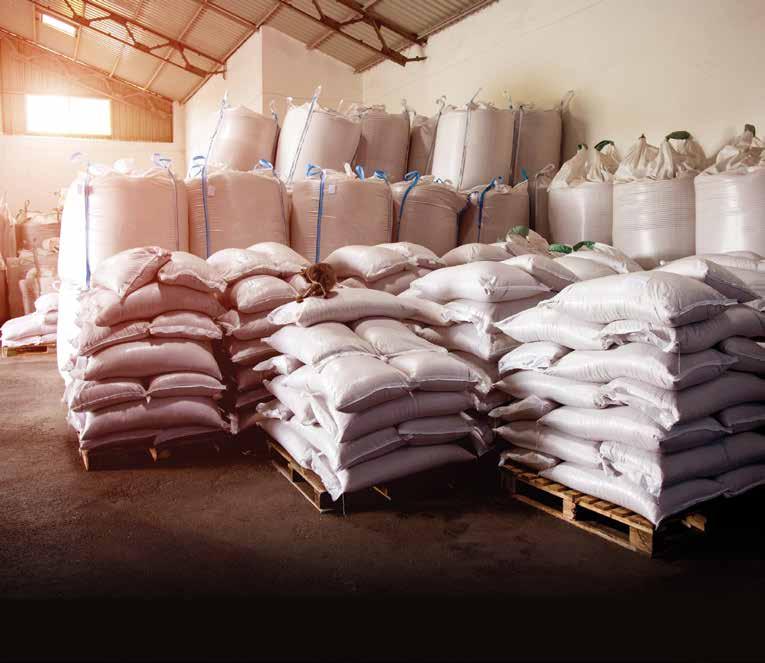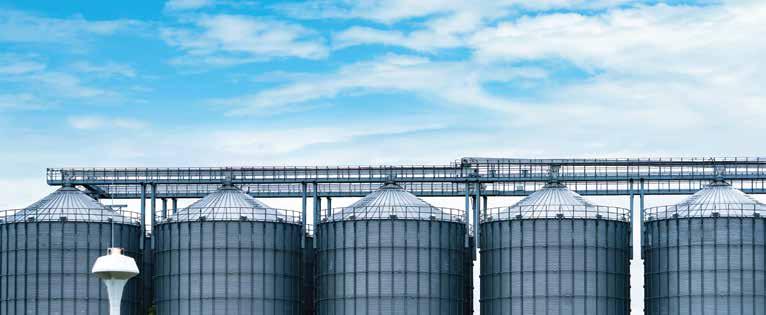
4 minute read
Feed Ingredients
There are many options available when you start to look for feed ingredients. Of course, the species of livestock will limit that somewhat, as will government regulations. There are some other limiting factors as well. Local availability and cost are two of the larger factors that restrict what we utilize. The form of the product, space to store products and the equipment used to handle them are some others. Today and in the short-term future, general availability may become the most relevant factor.
Generally speaking, the larger the feed mill, the more options they have for storage. Conversely, those really large mills are often specialized with equipment that may limit some forms of ingredients, so they may or may not have more options than some of the midsized or small mills.
Advertisement
In Decatur, Alabama, we are fortunate to have a good range of ingredients that are fairly close by. That has allowed us to use 10 to 12 different major ingredients and 10 or 12 minor ingredients without having to rely on shipping things from all over the world, at least not the things that we use the most of. Specialty items like vitamin and mineral premixes are shipped great distances but in small quantities. Smaller freight bills are a big advantage and the usual reliability of having some things “next door” adds a small degree of security, even in uncertain times where we are seeing major supply interruptions.
With uncertain times, ingredient storage becomes more critical and most feed mills, including ours, would like to have more. There are so many things in today’s world that can change the supply chain. Under normal circumstances, it is often difficult to keep the correct balance of ingredients in place to make a wide variety of feeds without constantly changing formulas. We do our best to produce consistent feeds with as few changes as possible.
Usually when we see major ingredient changes, they are gradual, and the feed industry adapts in a timely manner. This year the changes were not gradual and that has changed the outlook of many things, even in the feed industry.
With the COVID-19 mitigation plans earlier this year, agriculture and most agriculture companies have all been declared essential and the hope was that the supply chain would remain healthy. The closing down of travel, restaurants and bars and many other nonessential businesses resulted in limiting production of several of the ingredients that we use every day to make livestock feed.
Let’s look at the ingredient dried distillers grain. There are two types of DDGs. One comes from ethanol production and one comes from distilleries that make alcohol for people to drink. They can basically be used interchangeably in many feeds. Farmers and feed mills tend to use whichever one is close by because less freight makes it more economical. Switching from one to another will change the appearance of the feed a great deal and sometimes it will change the taste or smell enough that the animals will notice, even if it does not make a major nutritional change.
As oil prices fell to lows not seen in years and retail gasoline prices followed, the demand for ethanol dropped. When the demand for ethanol drops, the production of ethanol also drops and so does the byproduct DDGs. When you add closed-down bars and no spring break, the distilleries that make drinking alcohol begin to look at a decrease in demand and they began to make some production changes. So, production for both forms of DDGs drops at about the same time and supplies tighten up.
When one ingredient slows down, it increases the need for similar ingredients and usually with our diverse national system that is not a major issue. There will be other products to fill the hole left by whatever is short. Not so much when the entire economy has been slowed down. Other byproducts are also affected. Several wheat byproducts get in short supply when restaurants and bakeries need less flour and other corn byproducts are cut back when the demand for corn syrup slows. Currently, we have not seen the demand for soy oil change the availability for soybean meal or soyhulls, but if restaurants remain closed, oil stays low (biodiesel demand issues) and other things that use soy products get put on the backburner, there could be issues with that supply chain as well. All of those things add together to drive feed mills back to using basic ingredients such as corn as much as possible and to look for other higher protein products.
These all add together to increase the changes you have seen and likely will continue to see in the feed you buy. Hopefully, those changes will be small and not very often. As supplies continue to shrink on many of the basic things we use, the appearance, the taste and the smell of some feeds will change. You will likely notice the appearance changes more than your livestock will notice the changes in taste or smell. The nutritional value of the feed is the least likely thing to change and rest assured that we will work hard every day to minimize the other changes.









